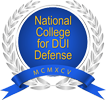Navigating Drug Charges in Cadiz, OH
The consequences of dealing with drug charges in Cadiz, Ohio, and the surrounding areas of Harrison County can vary greatly. These outcomes depend on several factors, such as the location of the offense, the involvement of task force detectives, the prosecutor’s approach, and the judge’s preference for rehabilitation or punishment. The same drug charge could lead to imprisonment, probation, or even dismissal.
Having a proactive and assertive defense strategy can significantly affect the outcome, potentially leading to reduced charges or complete dismissal. This is promising news for those accused, emphasizing the importance of seeking representation from an experienced Cadiz criminal lawyer.
Legal Representation for Drug Charges in Cadiz, OH
Youngstown Criminal Law Group: Advocating Against Drug and Narcotic Offenses
At Youngstown Criminal Law Group, we dedicate ourselves to defending individuals accused of drug-related offenses throughout Ohio. With keen insight into potential weaknesses in the prosecution, Sean Logue aims to leverage these to secure the best resolution for your case.
We understand the profound impact these allegations can have on both your personal and professional life. To explore how we can assist, we invite you to schedule a complimentary, confidential consultation. This meeting will allow our Cadiz OVI lawyer to assess your situation thoroughly.
Our group is well-versed in Ohio’s laws against possession, distribution, sale, or trafficking of controlled substances. We are familiar with how these offenses are prosecuted in Cadiz, OH, courtrooms.
Ohio Drug Charges Overview
Ohio’s legislation, prosecutorial efforts, and law enforcement activities reflect heightened vigilance towards combating drug offenses. This is partly due to Ohio’s consistent high ranking among states with significant drug crime rates. The U.S. Department of Justice Drug Enforcement Administration (DEA)’s 2018 National Drug Threat Assessment (NDTA) provides a comprehensive examination of the drug offenses the state is determined to curb. Predominant among these are offenses related to marijuana, cocaine, heroin, hydrocodone, fentanyl, and other synthetic opioids, as well as opioid cocktails.
Key Statistics and Trends
- Rising Drug Crime Rates: From 2004 to 2014, Ohio experienced an almost 60% increase in drug crime rates, primarily due to a 57.8% rise in drug possession cases.
- Predominant Substances: Marijuana was the most common drug involved in Ohio incidents, with a 72.5% increase during the reported period. Cocaine was the second most common until opioids took over in 2010.
- Increase in Stimulant-Related Incidents: Incidents involving stimulants, mostly methamphetamine, saw a 300% increase.
Drug-Related Offenses and Consequences
Only 3.9% of drug crimes in Ohio involved weapons at the time of the report’s publication. However, the state has seen an increase in drug-related burglaries and robberies, largely attributed to regulations limiting prescription opioid supplies. This scarcity has driven street prices up, pushing addicted users towards criminal activities to finance their habits.
Facing drug charges in Cadiz places you at the intersection of aggressive law enforcement and judicial efforts aimed at addressing the state’s drug problem. Securing a Cadiz traffic ticket lawyer adept at navigating this changed landscape is crucial for achieving the most favorable outcome.
For individuals confronted with drug-related charges in Cadiz, understanding the landscape and seeking competent legal representation is essential. The Ohio Revised Code defines the legal framework for these offenses, making it imperative to engage a Cadiz OVI lawyer who is not only familiar with these laws but also experienced in handling such cases effectively.
Understanding Drug Crime Terms in Ohio
Navigating the complexities of drug-related offenses in Ohio can feel overwhelming. To demystify the legal jargon and help you understand the potential charges you could face, we’ve broken down some essential terms from the Ohio Revised Code § 2925.01.
Definitions You Need to Know
- Administer: This means giving a drug to a person or animal through various methods, such as injection, ingestion, inhalation, or any other way that allows the drug to enter the body.
- Drug Enforcement Administration (DEA): This is the branch of the U.S. Department of Justice that oversees the enforcement of federal drug laws, focusing on drug distribution and trafficking.
- Controlled Substance: Refers to drugs, substances, or mixtures listed in schedules I through V, indicating their regulation due to potential abuse.
- Cultivation: Cultivation involves growing a plant through planting, watering, fertilizing, and caring for it until it matures.
- Dangerous Drug: These are substances that require a prescription label as per Federal law, including drugs for injection, those derived from biological sources, or those containing a schedule V controlled substance.
- Dispense: To distribute, pass on, or provide a drug or substance.
- Distribute: This involves dealing, transporting, transferring, or shipping a controlled substance, separate from administering or dispensing.
- Drug: A substance recognized in the U.S pharmacopeia and national formulary used for treatment, prevention, diagnosis, or mitigation of diseases, or one that alters bodily structures or functions.
- Drug abuse offense or felony drug abuse offense: Any violation of laws against the misuse of drugs, including actions like manufacturing, selling, administering, or distributing controlled substances.
- Hypodermic: Refers to methods of administering drugs beneath the skin, such as through hypodermic needles.
- Manufacturer: An individual or entity that produces a controlled substance.
- Marihuana: Represents the cannabis plant, excluding mature stalks and non-resinous parts.
- Narcotic Drugs: A category of controlled substances that includes opium, coca leaves, and other chemically similar drugs.
- Pharmacist: A professional licensed under Ohio Revised Code Chapter 4729 to practice pharmacy.
- Trafficking: The act of selling or offering to sell controlled substances, or preparing them for sale, with knowledge that they will be sold or resold.
- Sale: Involves the barter, exchange, delivery, or transfer of a controlled substance, along with the transaction connected to such actions, facilitated by individuals in various roles.
- Drug Schedules (“Schedule I” through “Schedule V”): These are classifications of drugs as defined by section 3719.41 of the Ohio Revised Code, detailing their regulation and control.
- Wholesaler: An entity that supplies drugs, not produced, manufactured, or prepared by them, as outlined in section 4729.01 of the Revised Code, excluding those fulfilling official prescriptions.
Understanding these terms is the first step toward grasping the intricacies of Ohio’s stance on drug crimes. Whether you’re researching out of curiosity or necessity, this guide aims to make the legal landscape a bit more navigable.
Understanding Ohio’s Controlled Substance Schedules
In Ohio, similar to the federal system, controlled substances are divided into five unique schedules as stipulated under the Ohio Revised Code § 3719.41. These classifications are critical as they significantly affect the seriousness of charges in drug-related offenses. Essentially, these categories depend on the substance’s potential for abuse alongside its recognized medical use, if any exists.
A Closer Look at Each Schedule
Schedule I Substances
Definition: Substances categorized here have the highest likelihood of abuse and typically lack recognition for medical use.
Examples: Included in this category are drugs like MDMA (Ecstasy), substituted cathinones (often referred to as “bath salts”), heroin, LSD, PCP, and psilocybin (magic mushrooms).
Schedule II Substances
Definition: Though still considered to carry a high risk of abuse, these drugs might have some acknowledged medical uses.
Examples: Noteworthy substances in this class are cocaine, Adderall®, codeine, opium, methamphetamines, oxycodone (OxyContin® or Percocet®), and oxymorphone.
Schedule III Substances
Definition: These drugs are judged to have a lower potential for abuse compared to Schedules I and II and are recognized for their medical applications.
Examples: This group includes anabolic steroids, ketamine (Special K), lysergic acid, and testosterone.
Schedule IV Substances
Definition: Substances in this schedule are regarded as having an even lesser potential for abuse and are commonly utilized for medical purposes.
Examples: Included here are alprazolam (Xanax®), barbital, diazepam (Valium®), and zolpidem (Ambien®).
Schedule V Substances
Definition: These are controlled substances with the least potential for abuse relative to the other schedules and are regularly used medically.
Examples: This includes narcotic drugs with limited concentrations of certain substances, such as codeine, dihydrocodeine, ethylmorphine, diphenoxylate, opium, and difenoxin combined with atropine sulfate.
Navigating Ohio’s Drug Charges
The Ohio Revised Code details various drug offenses, each carrying different implications based on the substance type and quantity involved:
- Trafficking and Aggravated Trafficking (Ohio Revised Code § 2925.03)
- Gifts of 20 grams or less can range from a minor misdemeanor to a third-degree misdemeanor for subsequent offenses.
- Possession amounts from less than 200 grams to over 40,000 grams can escalate from a fourth-degree felony to a mandatory second-degree felony sentence of eight years.
- Illegal Manufacture of Drugs (Ohio Revised Code § 2925.04)
- Manufacturing amounts less than 100 grams is considered a minor misdemeanor, with penalties increasing significantly with the quantity, up to a mandatory second-degree felony sentence for 20,000 grams or more.
- Possession of Controlled Substances (Ohio Revised Code § 2925.11)
- Similar to trafficking, possession charges range from minor misdemeanors for amounts less than 100 grams to mandatory second-degree felony sentences for quantities exceeding 40,000 grams.
- Possessing Drug Abuse Instruments (Ohio Revised Code § 2925.12)
- This offense is classified as a second-degree misdemeanor for a first offense, escalating to a first-degree misdemeanor for those with a prior drug abuse conviction.
This overview aims to make the multifaceted world of Ohio’s controlled substance schedules more comprehensible, highlighting the profound impact these classifications have on legal outcomes for drug-related offenses.
Understanding Ohio’s Drug Offense Penalties and Defenses
Navigating the legal repercussions of drug charges in Cadiz, OH, can seem daunting. The severity of fines and prison sentences often hinges on the crime’s classification. It’s vital to acknowledge that proximity to schools or minors can intensify these charges. Here’s a breakdown, guided by the Ohio Revised Code, to help simplify the intricate landscape of Ohio’s sentencing guidelines.
Penalties Based on Crime Classification
Minor and Misdemeanor Offenses:
- Minor Misdemeanor: A fine up to $150.
- Fourth-Degree Misdemeanor: Possible jail time of 30 days and a fine not exceeding $250.
- Third-Degree Misdemeanor: Up to 60 days in jail and a fine up to $500.
- Second-Degree Misdemeanor: Maximum jail time of 90 days with a $750 fine.
- First-Degree Misdemeanor: Jail time can extend up to 180 days, along with a $1,000 fine.
Felony Charges:
- Fifth-Degree Felony: This level can result in up to 12 months in prison and a fine up to $2,500.
- Fourth-Degree Felony: Involves up to 18 months in prison and a $5,000 fine.
- Third-Degree Felony: Punishable by up to five years in prison and a $10,000 fine.
- Second-Degree Felony: Carries up to eight years in prison with a $15,000 fine.
- First-Degree Felony: The most severe, leading to up to 11 years in prison and a $20,000 fine.
Crafting a Defense Against Drug Charges
When facing drug charges, aligning with a skilled legal team like Youngstown Criminal Law Group is crucial. Our Cadiz criminal lawyers adopt a comprehensive strategy, launching independent investigations, and scrutinizing every piece of evidence to craft a defense tailored to your case.
Exploring Legal Defenses:
Fourth Amendment Rights – Protection Against Unreasonable Searches
The U.S. Constitution’s Fourth Amendment safeguards you against undue searches and seizures, emphasizing your privacy rights. If evidence against you was obtained without adherence to these protections, dismissal of charges could follow. Specific scenarios, such as home searches, demand probable cause or consent, making unauthorized evidence collection potentially inadmissible.
Entrapment – When Law Enforcement Crosses the Line
Entrapment occurs when law enforcement induces someone to commit a crime they wouldn’t normally consider. This defense argues that an individual was unfairly coerced, focusing on the nature of the police’s involvement. Successfully arguing entrapment requires proving both that the act was out of character for the defendant and that the law enforcement’s conduct would likely induce a law-abiding citizen to commit the crime.
Conclusion
Understanding the nuances of Ohio’s drug offense penalties, along with potential defenses, can significantly impact navigating these charges. Whether facing a minor misdemeanor or a serious felony, knowing your rights and the intricacies of the law, as outlined in the Ohio Revised Code, is indispensable. With the right legal counsel, navigating this challenging terrain becomes less daunting, offering a beacon of hope for those entangled in the complexities of drug charges.
Understanding Defense Strategies for Drug Charges
In the complex world of legal defenses against drug charges, several strategies may come into play. These defenses are critical in proving a person’s innocence or reducing the severity of their charges. Below, we explore some of these strategies, emphasizing how they apply within the legal framework, including specific references to Ohio law.
The Substance in Question Was Not Illegal
One of the foundational defenses in drug-related cases is contesting the illegal status of the substance involved. This defense challenges the accusation by asserting that the substance thought to be a controlled drug is, in fact, legal.
Example: A scenario where what appeared to be marijuana was actually home-grown herbs like basil or oregano. Another instance could involve a misunderstanding where a substance believed to be cocaine was actually baking flour. This approach shifts the burden of proof to the prosecution. It necessitates that the prosecutor must have the substance analyzed by a laboratory and then requires the testimony of the lab analyst in court to confirm the substance’s legality.
Medical Marijuana Exemption
In instances where the case involves marijuana, the defense may invoke Ohio’s medical marijuana exemption. According to the Ohio Revised Code Title 37 Chapter 3796, the state permits the cultivation, dispensing, and use of marijuana for medical purposes under specific conditions.
Qualifying medical conditions include, but are not limited to:
- Cancer
- Multiple sclerosis
- AIDS
- Epilepsy
- Post-traumatic stress disorder
- Fibromyalgia
For individuals who have registered with the state and possess a doctor’s recommendation, this exemption allows for the legal purchase, use, and possession of marijuana in several formats such as edibles, oils, and tinctures. Successfully meeting Ohio’s required conditions for medical marijuana use can lead to the dismissal of marijuana-related charges
Defending Against Drug Charges in Cadiz
Disputing Ownership of the Drugs
Ownership Challenge
A critical defense strategy is contesting ownership of the drugs in question. This approach asserts that the accused did not own the substances. Demonstrating this, often by proving lack of control over the drugs, can lead to charges being dropped.
Unintentional Possession
Defense of Unintentional Possession
This defense is employed when the accused was unaware of possessing a controlled substance. It might be applicable in cases where, for example, an individual unknowingly carries a package containing illegal drugs as part of their job responsibilities.
Allegations of Planted Drugs
Claims of Planting
In certain situations, there might be grounds to argue that the drugs were planted. This necessitates a comprehensive investigation into law enforcement procedures, focusing on the conduct and any potential misconduct of the arresting officer.
Missing Evidence
Lost Evidence
Sometimes, drugs confiscated during an arrest may be misplaced or lost prior to trial. If the prosecution cannot produce the physical drugs as evidence, it significantly weakens their case, often resulting in the charges being dismissed.
The absence of drugs from the evidence chain can prevent the prosecution from proving possession, raising the possibility of charges being dropped.
Understanding these defenses, particularly in the context of Ohio law, is essential for anyone facing drug charges. Each case is unique, highlighting the importance of a customized defense approach.
Cadiz’s Approach to Combating Drug Offenses
Comprehensive Strategy
Ohio’s commitment to tackling drug-related crimes is demonstrated in Cadiz’s innovative and multifaceted approach. This strategy employs a variety of investigative techniques aimed at reducing drug offenses. Below, we explore the modern methods utilized by law enforcement to keep our communities safe.
Investigative Techniques in Drug Offense Cases
Electronic Surveillance
Wiretapping and Beyond
In the digital era, wiretapping includes monitoring various forms of communication such as phone calls, emails, internet usage, and fax communications through specialized equipment. Law enforcement can use devices like pen registers to track calls and advanced technology such as drone surveillance and stingray devices to locate suspects.
Monitoring Utility Usage
An increase in electricity usage may indicate grow lights for drug cultivation. Infrared imaging technology helps officers detect unusual heat patterns emanating from properties.
Controlled Communication Operations
Manipulated Phone Calls
Police often orchestrate controlled phone calls where a trusted contact engages the suspect in conversation. These are carefully scripted to elicit incriminating statements, with the calls being recorded for evidence.
Mail Monitoring
USPS Collaboration
The United States Postal Service plays a crucial role in identifying mail-based drug trafficking. Through “mail covers,” suspicious packages are tracked, and with the help of Postal Inspectors and canine units, illicit substances are intercepted. This collaboration leads to around 1,500 arrests annually for drug trafficking and money laundering.
Direct Surveillance Techniques
Stakeouts and Hidden Cameras
Traditional surveillance, like stakeouts, remains a vital component of drug investigations. Unmarked vehicles equipped with technology are used to discreetly monitor suspect activity. These setups may be manned or depend on automated devices.
Utilizing Confidential Informants
Role of Informants
Endorsed by the FBI, confidential informants are crucial in providing law enforcement with insights into drug trafficking activities. Their observations and tips are significant in disrupting drug cartels and criminal organizations.
Conducting Controlled Purchases
Simulated Drug Transactions
When there’s sufficient suspicion, officers conduct controlled buys to catch perpetrators in the act. Officers inspected for contraband engage suspects using pre-recorded funds to simulate purchases. Successful transactions leading to drug discovery result in immediate arrests.
Collaborative Task Forces
Statewide Anti-Drug Efforts
Supported by federal funding since 1988, Ohio has formed numerous multi-jurisdictional Drug Task Forces like METRICH. These task forces, guided by the Ohio Task Force Commanders Association, showcase the collaborative spirit of local law enforcement. Their mission is to significantly reduce the flow of illegal substances across the state. In 2019, the U.S. Bureau of Justice Assistance allocated over $5.7 million to support these efforts, demonstrating Ohio’s steadfast commitment to combating drug-related crimes.
Cadiz’s proactive approach to drug offense investigations underlines Ohio’s resolve in fighting drug-related crimes. By leveraging technology, fostering inter-agency collaboration, and maintaining vigilance, Cadiz law enforcement plays a crucial role in community safety.
Understanding Evidence in Cadiz Drug Offense Cases
Navigating Drug Case Evidence
In drug-related legal battles, the evidence presented by the prosecution is pivotal. With advances in technology and the rise of specialized task forces, evidence collection has become more efficient. This evidence varies depending on the nature of the offense, from drug trafficking to manufacturing or cultivation, and applies to all drug crimes.
Types of Evidence in Drug Offenses
- For Drug Trafficking Cases:
- Items sent via postal mail
- Scales, business cards, and small plastic bags
- Money from undercover purchases
- Logbooks detailing transactions
- In Manufacturing/Cultivation Cases:
- Chemicals for drug preparation
- Grow lights and cultivation schedules
- Equipment for creating drugs at home
- Common Evidence Across All Drug Crimes:
- Text conversations
- Eyewitness accounts
- Police body camera footage
- Testimonies from computers and police
- Crime lab results
- Digital files, audio clips, surveillance footage
- Photographs and emails
The prosecution’s reliance on such evidence underscores the importance of having a Cadiz OVI lawyer who can challenge its admissibility.
The Strategy of Evidence Suppression in Ohio Drug Cases
Suppressing critical evidence can significantly impact your case outcome, potentially leading to charge dismissal. Under the Ohio Revised Code, evidence obtained unlawfully by police is inadmissible in court. This includes evidence found as a result of the initial illegal search, known as the “fruit of the poisonous tree.”
Challenging Evidence on Legal Grounds
Violations of Fourth Amendment Rights:
- Property searches are lawful only if conducted with a warrant or specific conditions. Otherwise, evidence found may be excluded.
- Consent for searches must be informed; unclear consent can invalidate a search.
- Without a warrant, police can only seize evidence in plain view, limiting their search capabilities.
- Following an unlawful stop or lawful arrest, improper home or vehicle searches can lead to evidence exclusion.
Violations of Fifth Amendment Rights:
- The Fifth Amendment mandates that police read your Miranda rights upon custody. Any evidence from interrogations post-request for a Cadiz traffic ticket lawyer—or without Miranda rights—can be suppressed.
Understanding these complexities and potentially challenging evidence is critical. If you or someone you know faces drug charges in Cadiz, knowing these rights and how to scrutinize and potentially dismiss evidence against you is invaluable. Always ensure you have legal representation well-versed in drug law and the Ohio Revised Code to advocate effectively on your behalf.
Navigating Ohio’s Drug Crime Case Process
Understanding Ohio’s Legal Steps for Drug-Related Offenses
Navigating Ohio’s drug crime case process can feel overwhelming, but knowing what to expect can help you prepare. Here’s a clear guide through the Ohio court system for drug offenses.
Initial Steps in Facing Drug Charges in Ohio
1. Arraignment or Initial Court Appearance
At this stage, you’ll stand before a judge to be formally informed of the drug charges against you. Here, you can plead guilty or not guilty. The judge may set bail, allowing you to remain out of jail while waiting for trial, and will also outline the timeline for future hearings or your trial.
2. Pre-Trial Hearings
These hearings are where the judge assesses your case’s progress. Both your Cadiz criminal lawyer and the prosecutor will attend. This period is crucial for your lawyer to negotiate and tackle any legal issues with the judge.
3. Motion Hearings
Before trial, both your Cadiz traffic ticket lawyer and the prosecution can file motions. These may include requests to suppress evidence, call witnesses, alter the trial venue, or even dismiss the case if your lawyer believes the evidence is insufficient.
4. Readiness Hearings
The court checks if both parties are ready for trial during this phase. If not, a continuance might be requested. Sometimes, the case is resolved here without a trial, leading directly to sentencing.
5. Trial
You have the choice between a bench trial (judge-only) and a jury trial. The prosecution must prove your guilt beyond a reasonable doubt, either to the judge or a jury, to secure a conviction.
6. Sentencing
If convicted, sentencing follows. Your Cadiz OVI lawyer can advocate for a lenient sentence, and family or friends may testify on your behalf for leniency.
Investigative and Prosecutorial Support in Cadiz
Investigation Tools and Teams
The Ohio Attorney General’s Office offers substantial support in drug crime cases, from investigation to court prosecution.
- Bureau of Criminal Investigation (BCI): Ohio’s main crime lab provides investigative and forensic services to aid drug crime investigations.
- Special Units: The Heroin Unit, Narcotics Unit, and Marijuana Eradication Unit focus efforts on drug-related offenses.
Special Prosecutors and Drug Task Forces
Harrison County boasts specialized prosecutors handling serious felony drug cases alongside regional drug task forces, from investigation through sentencing.
Ohio’s commitment to fighting drug offenses includes forming multiple drug task forces, backed by an additional $5 million in state funding since February 2020, to capture high-level traffickers and support anti-drug efforts.
Understanding Ohio’s Drug Crime Legal Framework
To grasp how Ohio handles drug offenses, examining key cases can illuminate the state’s legal stance. These cases highlight the complexities and evolving nature of law enforcement and judicial decisions in Ohio.
The State of Ohio v. Pribble
- Overview: Addressed a discrepancy between laws regarding repeat drug offenders.
- Legal Conflict: One law caps sentences at three years for most third-degree felonies, while another mandates a five-year sentence for certain felonies.
- Supreme Court Decision: Ohio Supreme Court ruled for the stricter five-year sentencing, setting a precedent for similar future cases.
Terry v. Ohio
- Legal Challenge: Defendants argued the search violated their Fourth Amendment rights due to lack of a warrant.
- Supreme Ruling: U.S. Supreme Court Justice Earl Warren deemed the search valid, stating the officer’s actions were justified based on suspect behavior. This ruling reshaped Fourth Amendment understanding.
The State of Ohio v. Gonzales
- Case Facts: Rafael Gonzales was caught with a cocaine brick containing a non-illegal substance, initially leading to a first-degree felony and 11-year sentence.
- Appeals Court Decision: The 6th District Court objected, ruling the total weight should not determine sentencing.
- Supreme Turnaround: Ohio Chief Justice Maureen O’Connor reversed the decision in 2017, arguing that fillers mixed with drugs should count toward total weight, enabling more severe penalties.
By examining these cases, we gain insight into Ohio’s approach to drug crimes, balancing law enforcement priorities with individual rights. The Ohio Revised Code is pivotal in shaping these outcomes, guiding both prosecution and defense in navigating drug-related offenses.
Cadiz Drug Crimes FAQs
- Q: How long will I be jailed for a drug crime in Ohio?
A: Sentences vary by offense type. Minor misdemeanors don’t incur jail time, but serious offenses could lead to prison. First-degree felonies can result in up to 11 years.
- Q: Can I get probation for a drug offense in Ohio?
A: Depending on your case, a judge might opt for probation. Work with a Cadiz criminal lawyer to build your case and advocate for the best possible outcome.
- Q: Will I face felony or misdemeanor charges if arrested for drugs in Ohio?
A: Charge severity depends on factors like drug type and quantity. Charges range from misdemeanors to felonies, including first-degree offenses.
- Q: Can felony drug charges be reduced to misdemeanors in Ohio?
A: Yes, plea agreements can reduce charges, potentially even dropping them. A Cadiz OVI lawyer can negotiate a plea deal on your behalf.
- Q: What defenses are available for drug offenses in Ohio?
A: Defenses include unlawful search, entrapment, planted drugs, unknowing possession, and medical marijuana provision eligibility.
- Q: What is the most common drug offense?
A: Possession of an illegal controlled substance is most prevalent.
- Q: Is drug possession a felony in Ohio?
A: In some cases, yes. Aggravated possession charges vary by substance quantity. Fifth-degree felonies apply to amounts below the bulk quantity.
- Q: What constitutes bulk amount in Ohio drug cases?
A: A controlled substance is in bulk if it equals or exceeds 10 grams or 25 doses.
- Q: Can a felony drug charge be downgraded to a misdemeanor in Ohio?
A: Non-violent, low-level offenses can be reduced under Senate Bill 3 (SB3).
Navigating Drug Crime Justice in Ohio
Overview of Drug Crime Prosecution Variability
Handling drug-related offenses in Ohio, especially in Cadiz, shows discrepancies, as highlighted by a Youngstown.com article from May 31, 2014. The article reveals disparities in prosecution and sentencing, emphasizing detective and judicial discretion. Decisions between rehabilitation and incarceration often depend on detectives’ aggressiveness and judges’ leanings toward rehabilitation.
Key findings include:
- Drug overdose fatalities in 2012 surpassed drug trafficker imprisonments.
- About 40% of drug trafficking indictments in ten mid-sized Ohio counties in 2012 and 2013 led to prison sentences.
- In 2013, 1,865 individuals were incarcerated for drug dealing, per Ohio Department of Rehabilitation and Correction data.
Legal Assistance for Narcotic Offenses in Cadiz, OH
Facing narcotics-related charges, whether possession, manufacturing, or other offenses, demands prompt, top-notch legal representation. Youngstown Criminal Law Group, serving Cadiz and the broader Harrison County area, specializes in defending clients accused of drug crimes, from controlled substance possession to severe charges like intent to sell and drug trafficking. Contact us at (330) 992-3036 for a free consultation.








